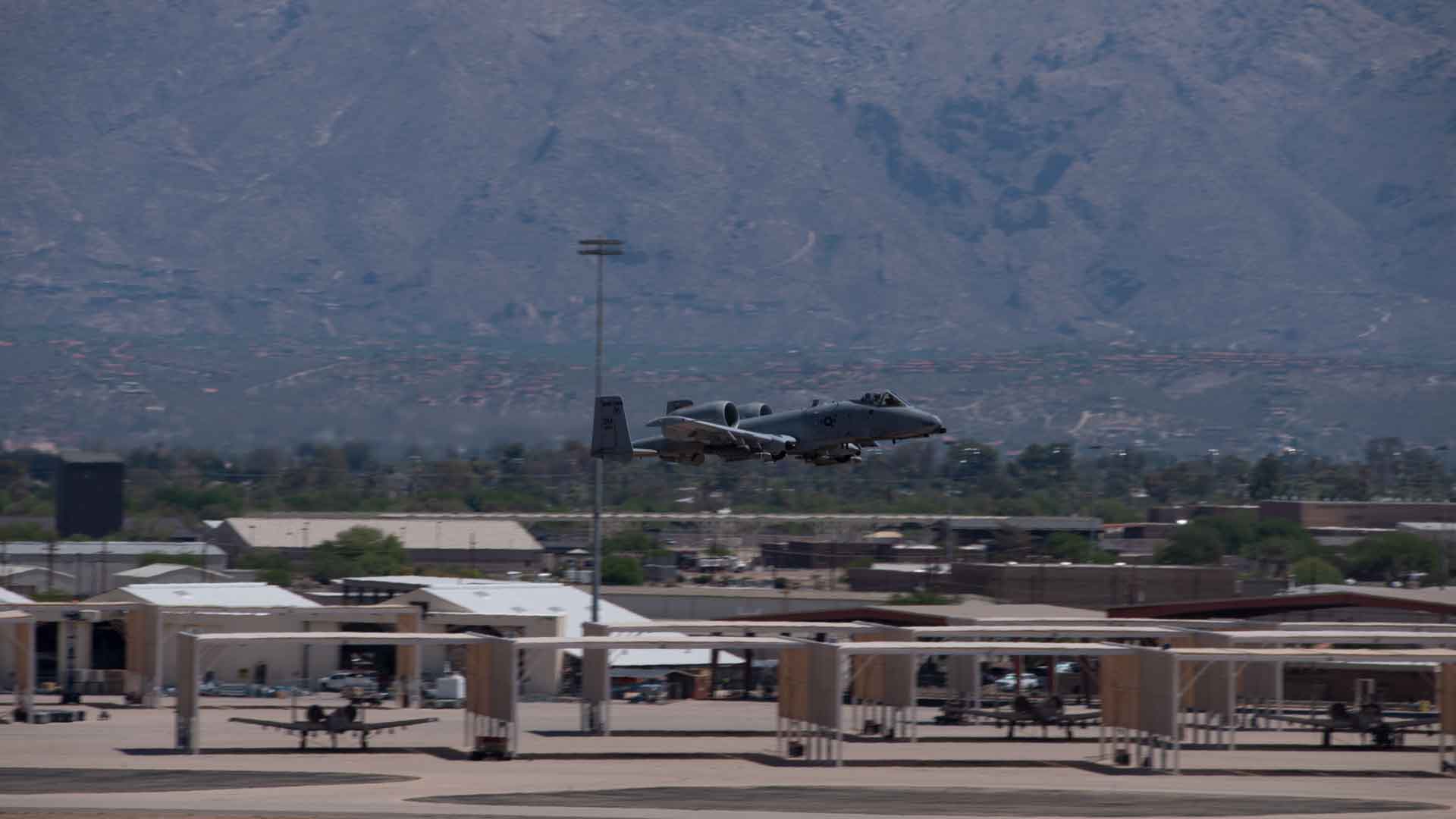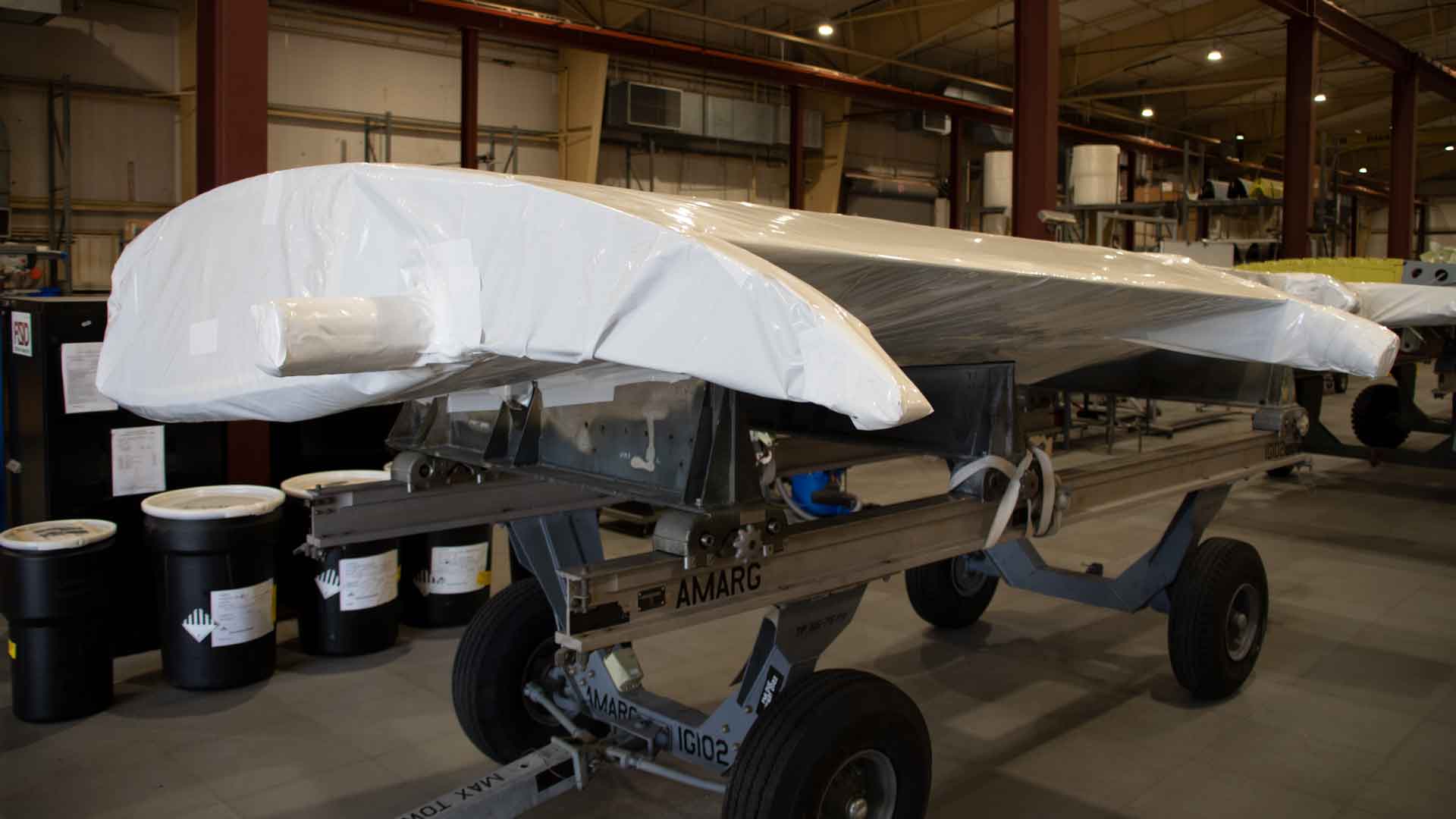 An A-10 makes a pass over the runway at Tucson's Davis-Monthan Air Force Base. July 2021.
An A-10 makes a pass over the runway at Tucson's Davis-Monthan Air Force Base. July 2021.
Update: On July 22, language was added to the U.S. Senate version of the National Defense Authorization Act that would prohibit the retiring of the A-10
The first A-10 was built in 1972, the last new plane rolled off the assembly line in the mid-1980s. It was designed to be a tank killer during the Cold War but took on a new role, close air support, in Iraq and Afghanistan.
Close air support is helping ground troops that are in trouble or protecting downed pilots.
“(It is) the best close air support airplane that any country has ever built,” said Senator Mark Kelly.
The Department of Defense has for, at least a decade, tried to retire the plane but Congress has kept that from happening. The budget proposed by the DoD once again plans to get rid of many of the planes. Kelly and other members of Arizona’s Congressional delegation are fighting that.
When Kelly was in the Navy he flew combat missions in the A-6 aircraft. He said it was bad at close air support. He also said bombing bridges in an attack aircraft, like the A-6, allows the pilot to come back another day if needed. Kelly said the A-10’s close air support mission doesn’t allow for that.
“When you’re doing close air support you’ve got to be 100% successful every time and this airplane (the A-10) is much more capable of that mission than the F-16 or the F-35 or any other airplane in the inventory,” said Kelly.
The A-10 is the main plane flown at Davis-Monthan Air Force Base. The facility is key to the future of the A-10 because it is where pilots come to learn to fly the plane. When those student pilots arrive in Tucson they are certified to fly which is important because there is no two-seat training version of the plane.
“That was honestly a little scary. Coming from the T-38 that’s a really difficulty plane to land but transitioning to this, that was my biggest concern how am I gonna land this jet, I’ve never done it before and I am by myself? But you figure it out. It’s a fairly simple aircraft to fly and figure out,” said Lt. Brendan Crouse, a pilot who recently graduated from the A-10 training program.
The A-10 is an old, subsonic plane but pilots still love flying it and have their favorite things.
“It would be either flying super close to the ground and doing ridge crossings and being able to see stuff that most other fighters don’t get to do and then shooting the gun,” said Crouse.
 An A-10 from Davis-Monthan Air Force Base fires its gun at the Goldwater Range during the Hawgsmoke competiton. June 2016
An A-10 from Davis-Monthan Air Force Base fires its gun at the Goldwater Range during the Hawgsmoke competiton. June 2016
The training the pilots get at Davis-Monthan pays off when they deploy overseas and help troops on the ground.
“The feeling that I feel most about flying combat is I have this image in my mind being up at our higher hold altitudes, getting a tasking, hearing that there are troops in contact, someone that needs my support, getting the flight steered in the right direction, and you feel like you are the king of the world,” said Lt. Col. Charles “Onstar” Stretch, commander of the 355th Operations Squadron at Davis-Monthan.
The base’s role in the future of the A-10 is not limited just to training. In the last two years, the Air Force has invested close to $1 billion to upgrade the A-10. Those upgrades include refurbishing the plane’s wings.
 A-10 wings at AMARG are prepared for refurbishment. July 2021
A-10 wings at AMARG are prepared for refurbishment. July 2021
Some of the wing refurbishment is taking place at Davis-Monthan, specifically at the 309th AMARG also known as “The Boneyard.”
“We’ve got 35 highly trained artisans here doing a great job and providing that capability back to the A-10 fleet, the warfighter, and the sustainment of the fleet at large,” said Col. Neil Aurelio, AMARG commander.
The Air Force recently announced it is closing the combat squadron at Davis-Monthan but it is leaving the training units in place. The Air Force’s plan would remove 35 A-10s from the base but other A-10 squadrons would move in to fill the void.

By submitting your comments, you hereby give AZPM the right to post your comments and potentially use them in any other form of media operated by this institution.